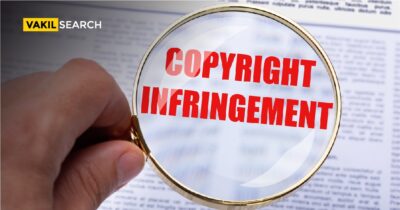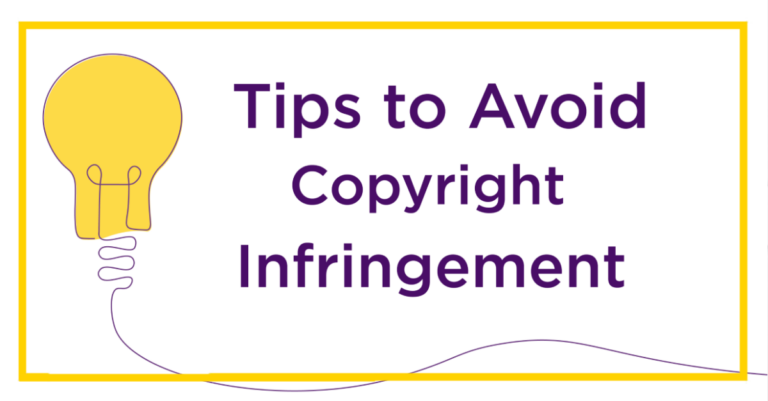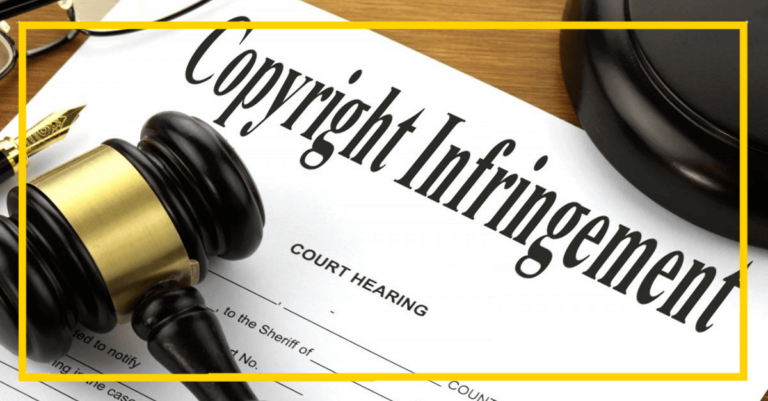Find out how educational institutions can use content with copyrights without breaking the law at Vakilsearch. Talk to our IP experts.
Introduction to Copyright Infringement
The purpose of copyright laws is to safeguard the inventors’ and publishers’ intellectual property rights. Copyright infringement, which is illegal and can have severe legal repercussions, including fines and damages, is the use of copyrighted materials without authorisation. Here are a few unique points to explore or think upon copyright infringement:
Importance of Copyright Laws in the Digital Age: With the rise of digital media and online content, copyright laws have become increasingly important. It is easier than ever to share and reproduce copyrighted materials, making it crucial to have legal protection in place to prevent infringement.
Balancing Copyright Protection and Access to Knowledge: While copyright laws are essential to protect creators’ rights, it can also restrict access to knowledge and information. It is crucial to strike a balance between protecting intellectual property and allowing access to knowledge, particularly in educational settings.
The Role of Fair Use in Education: Fair use policies allow the use of copyrighted materials for specific purposes, including education. It is crucial to understand the limitations of fair use and the factors that determine whether a particular use is considered fair.
Alternatives to Traditional Copyright: Some creators and publishers are exploring alternative models to traditional copyright, such as Creative Commons licenses. These licenses allow creators to specify how others can use their work while still maintaining some control over their intellectual property.
The Future of Copyright Laws: As technology continues to advance, copyright laws will need to evolve to keep up with new challenges and opportunities. Some experts predict that new forms of copyright protection, such as blockchain-based systems, may emerge in the coming years.
Fair Use Is an Exception to the Act of Infringement
There are, however, exclusions to the law that permit the unauthorised use of copyrighted materials. The use of copyrighted materials for certain purposes, such as criticism, commentary, news reporting, teaching, scholarship, or research, is permitted under the fair use exception.
Modern Technology and Educational Institutions
Intellectual property protection India – With relation to the use of copyrighted materials, modern technology advancements have presented educational institutions with new difficulties. With the rise in popularity of digital textbooks, online learning, and multimedia presentations, it is now simpler than ever for teachers to include protected content into their lessons. However, using content that is protected by copyright in digital formats may give rise to worries about copyright infringement. Institutions of higher learning must make sure they are abiding by fair use guidelines and securing the required authorisations before using copyrighted resources.
When Copyrighted Materials for Education Purpose Is Allowed?
The use of copyrighted materials in educational institutions is generally allowed if it falls under fair use. What is fair use?
The four factors considered in determining fair use are the purpose and character of the use, the nature of the copyrighted work, the amount and substantiality of the portion used, and the effect of the use on the potential market for the copyrighted work.
Educational institutions can use copyrighted materials for purposes such as teaching, research, scholarship, and criticism. However, they must ensure that the use is transformative and not for commercial gain.
Fair Use or Fair Dealing in Various Countries
Understanding International Copyright Law: Given that different nations have different fair use laws, it is crucial for educational institutions to be aware of the copyright regulations in the nations where they conduct business or where their products will be used. This includes being aware of the distinctions between fair use and fair dealing as well as any other potential copyright exceptions.
The Value of Legal Advice: Educational institutions must consult with a knowledgeable attorney in order to prevent copyright infringement. This can help guarantee that they are abiding by the proper fair use guidelines and requesting the relevant licenses as needed.
The Effect of International Agreements: Copyright laws and fair use guidelines may be impacted by international agreements like the Berne Convention and World Intellectual Property Organisation (WIPO) treaties. The implications of these agreements for educational institutions’ use of copyrighted materials should be understood.
Conclusion
By adhering to fair use guidelines and getting permission where required, educational institutions are permitted to utilise copyrighted content for educational purposes. The development of contemporary technology has made it simpler for educators to use resources protected by copyright in their instruction, but it has also given rise to new issues with respect to copyright infringement. For more information and if any queries exist, please feel free to contact our legal experts at Vakilsearch.
FAQ:
What is copyright for educational use?
The concept of fair use in copyright law stipulates that the copying of copyrighted works for certain educational purposes does not violate those rights.
Can copyrighted content be made accessible for students' educational use online?
Section 52(1)(i) stipulates that anything duplicated by a student or a teacher for academic purposes in a learning establishment would not be considered a copyright violation.
What does fair use copyright mean?
Fair use is allowed under Section 107 for activities including criticism, commentary, news reporting, and instruction (including making numerous copies for use in the classroom). Scholarship and research don't violate anyone's copyright.
Also Read,









